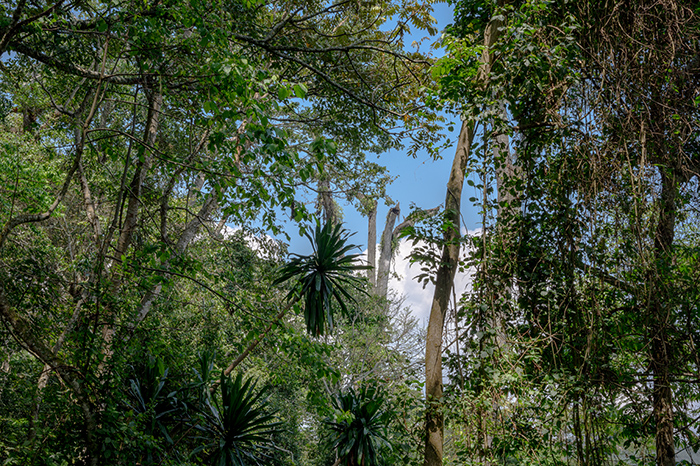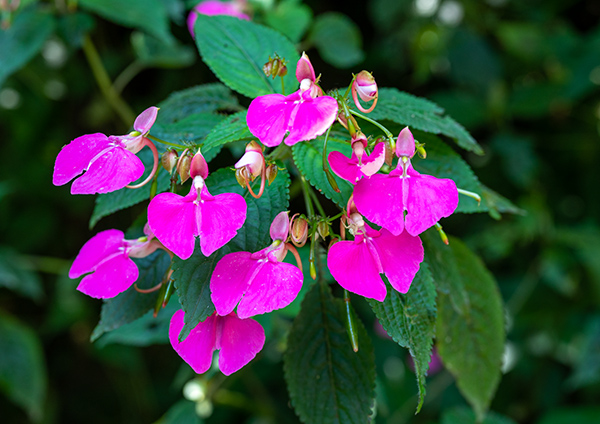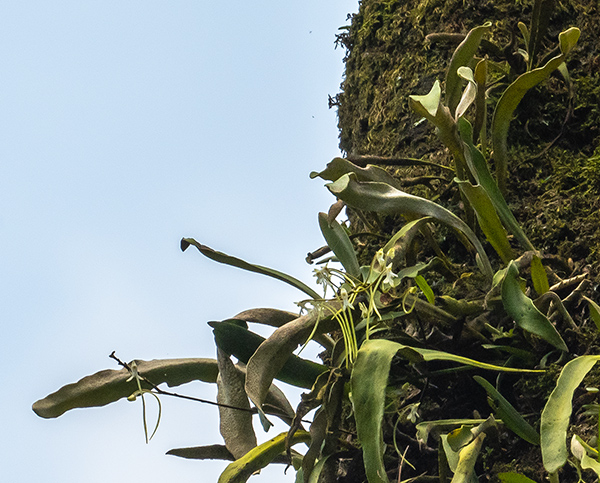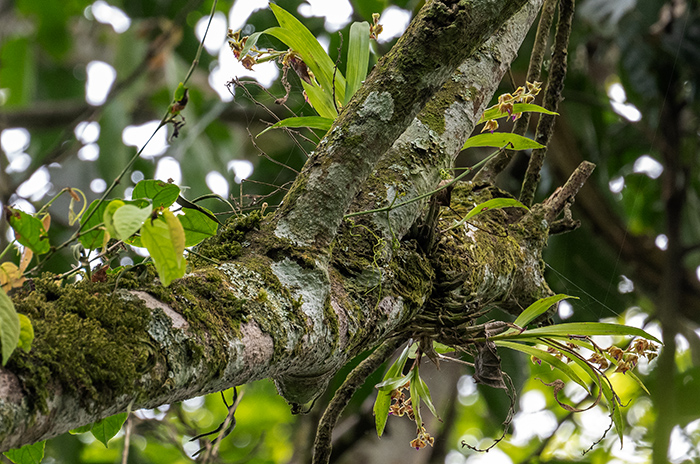Still slightly west of the Nyungwe is the rainforest of Cyamudongo. The 19 square kilometer area, with a sea level of 1900 meters somewhat lower than the Nyungwe, was originally connected to it, but was then isolated from it - the land in between was cleared and used for agriculture. Thanks to its steep slopes, the Cyamudongo forest was preserved. The permanent protection of the area was the goal of an agroforestry project of the University of Koblenz-Landau with the seeding of trees in the marginal zones.
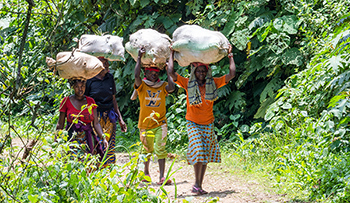
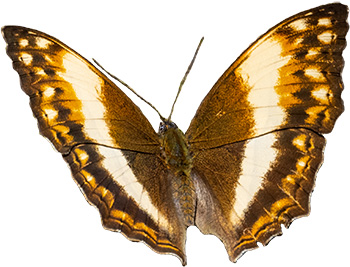
We walk along the same path on October 6 as farm workers hauling heavy sacks. Like the many butterflies, we are mainly interested in flowering plants. The flowers of a species of Impatiens, which probably belongs to the group of Impatiens stuhlmannii but is smaller and more intensely colored, have intense pink colors. The plant produces many flowers and attracts butterflies.
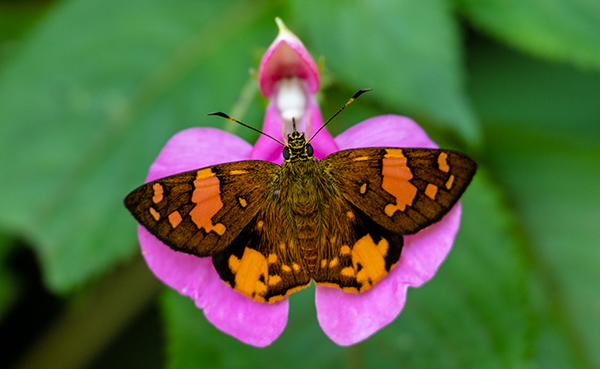
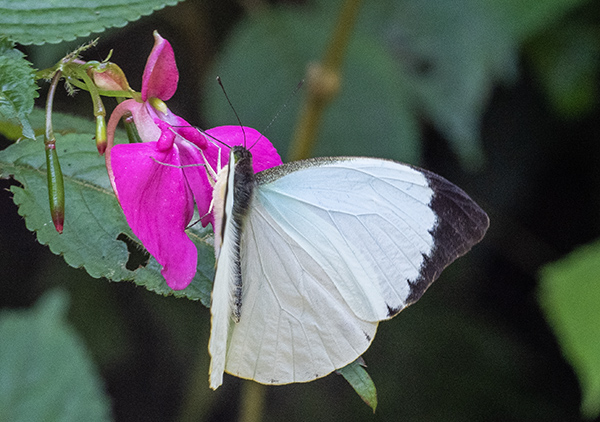
But our eyes also go up again and again. Hardly a trunk without orchids or epiphytic ferns.
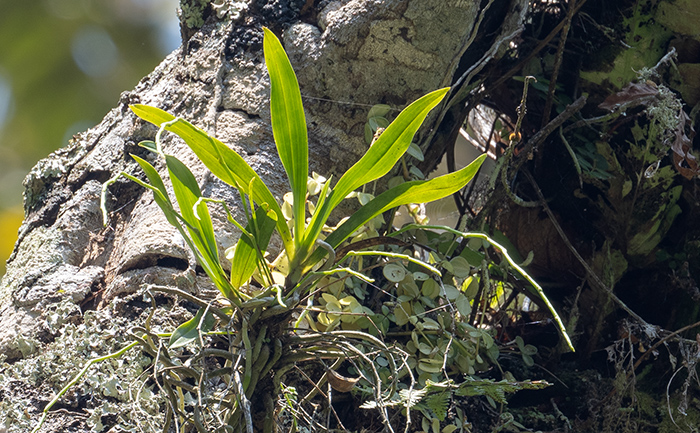
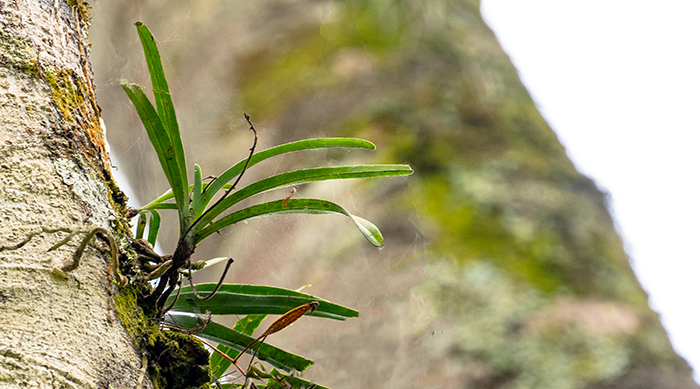
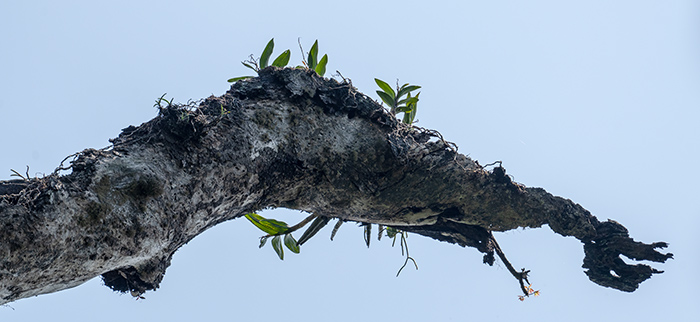
In more detail we look at the mahogany trees. Here grows not only Carapa wohllebenii with its pointed leaves, but also the first described Carapa grandiflora with roundish leaves.
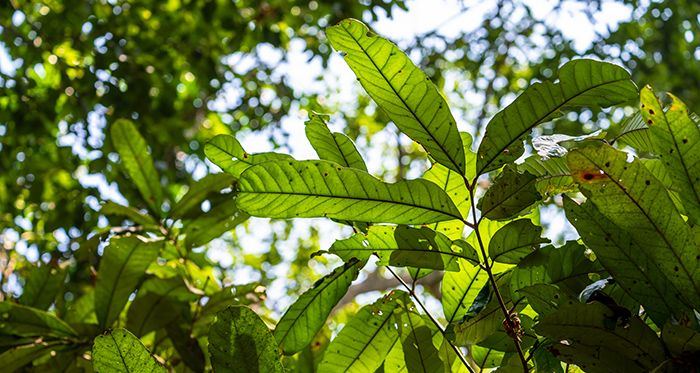
Eberhard draws my attention to the African pepper, Piper capense. The fruits taste pleasantly peppery. The plant, which is widespread from eastern Congo to South Africa, has a special significance in traditional African medicine. It has now been proven that the fruits can curb the growth of cancer cells.
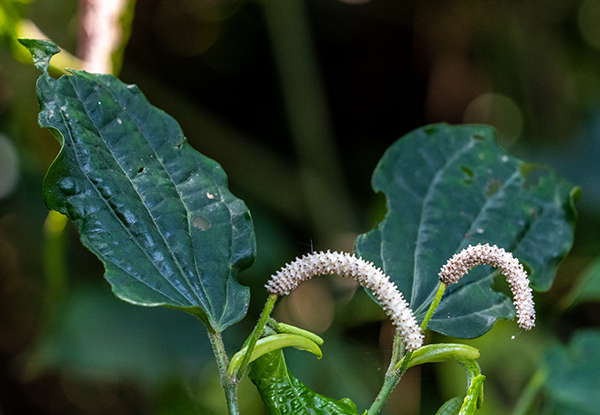
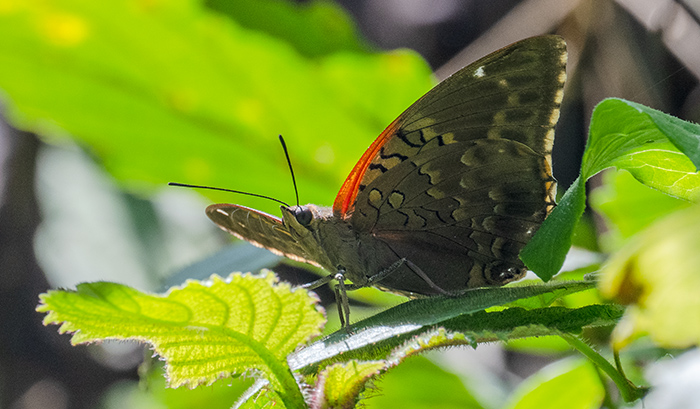
We immerse ourselves in a tropical soundscape, with a reverent sense of urgency to preserve this special habitat.
Then we see a flowering orchid in a tree, with many white flowers and a long curved spur - this is Angraecopsis gracillima.
And then, high up in the branches, Burkhard sees an orchid previously known only from Cyamudongo! Dorothee, Eberhard and Jean-Paul Lebel described the endemic Polystachya bruechertiae in 2009 (Fischer, Eberhard/Killmann, Dorothee/Lebel, Jean-Paul: Polystachya bruechertiae, a new species from Cyamudongo Forest, Rwanda. In: The Orchid 60, 2009. p. 105-113).
The trio of authors reports: During research in the Cyamudongo Forest, now part of Nyungwe National Park, a very conspicuous polystachya was discovered on a fallen branch. The description indicates among other observations: Flowers with greenish sepals, downy hairy outside, purple nerves inside, petals greenish, lip yellowish-green, with distinct purple nerves, callus yellow, hairy, midlobe of lip uniformly purple-violet. The purple lip can also be clearly seen from the ground on several plants at height. The name honors the teacher Alexandra Brüchert from Rockenhausen in the Donnersberg district of northern Palatinate, Germany.
